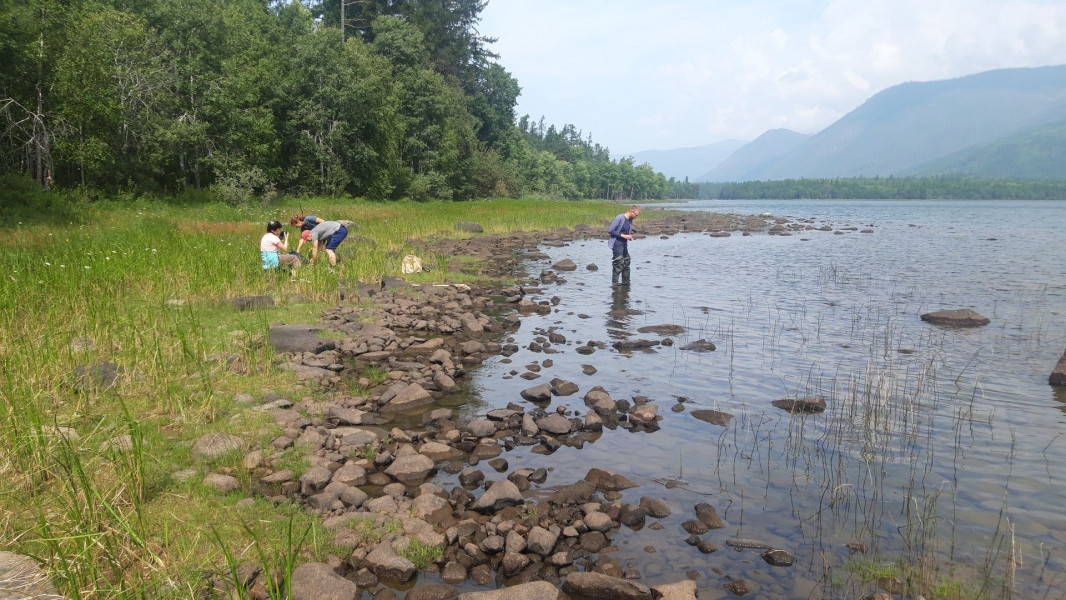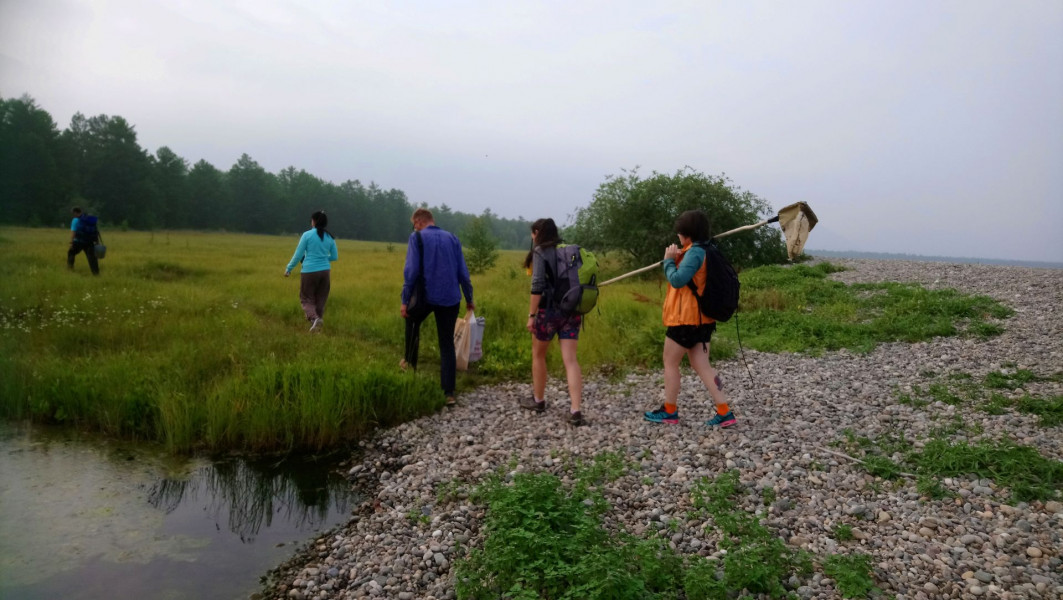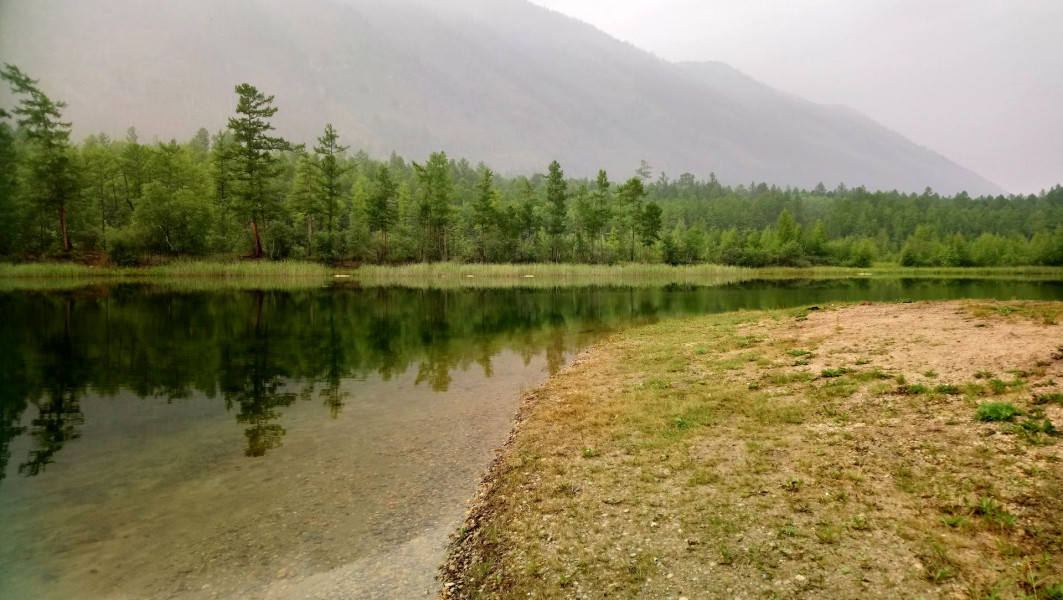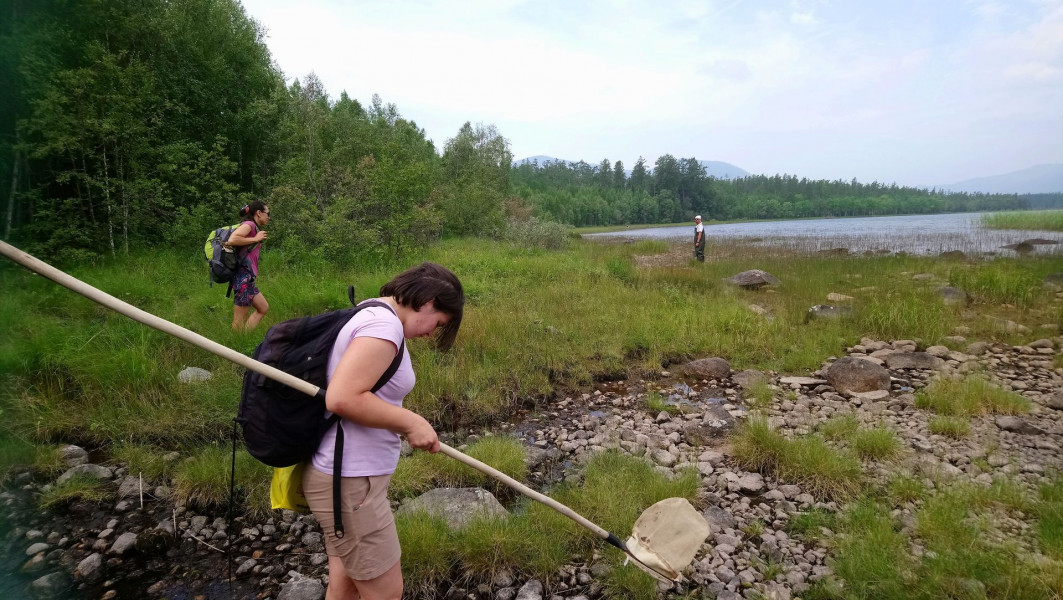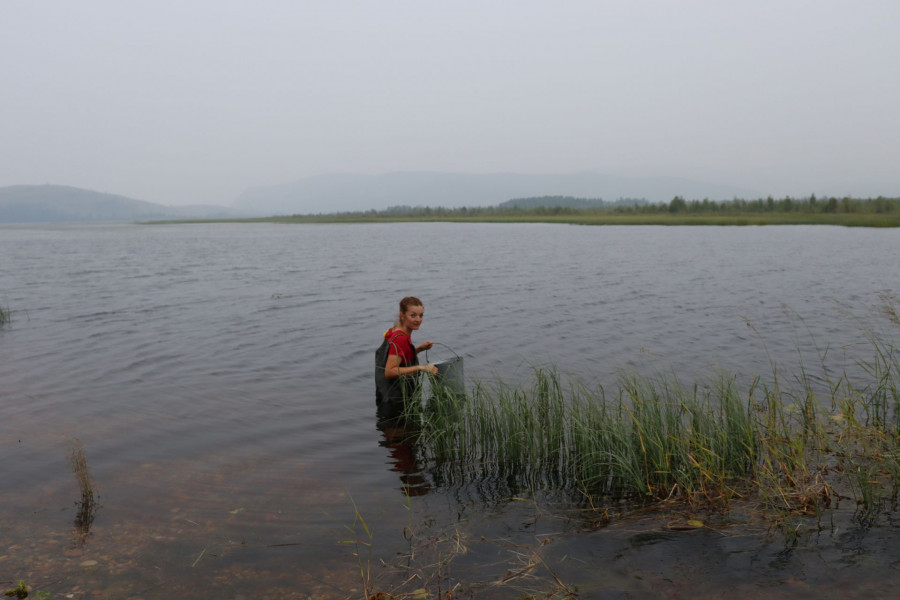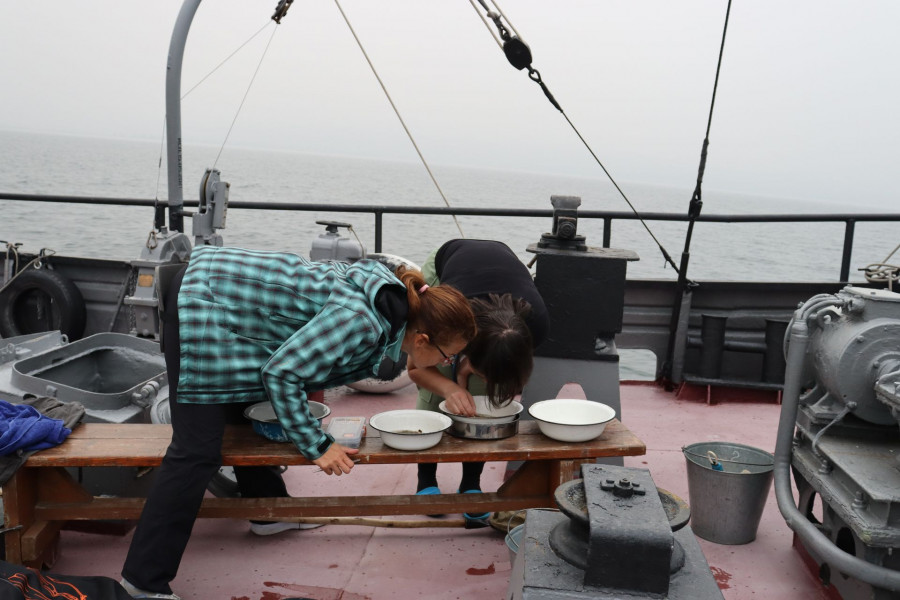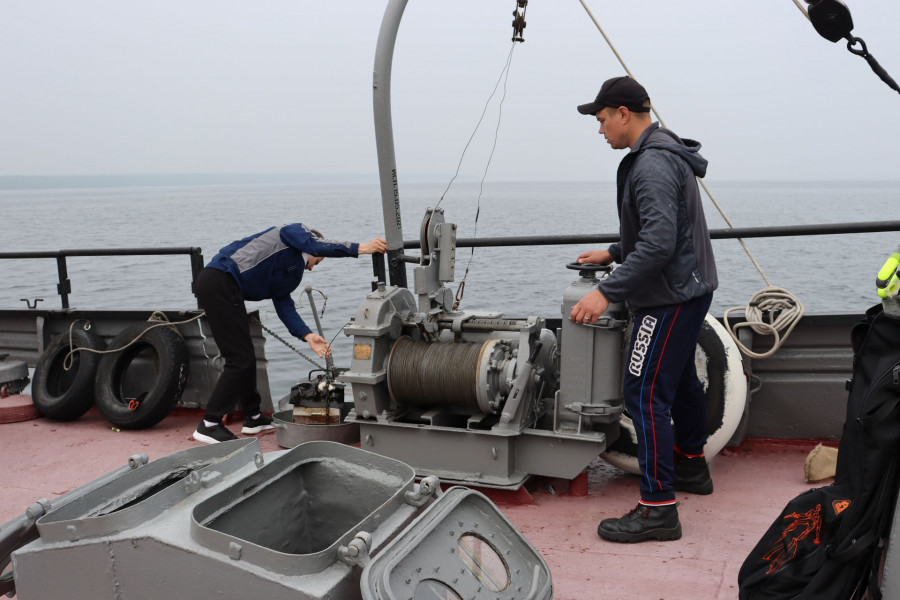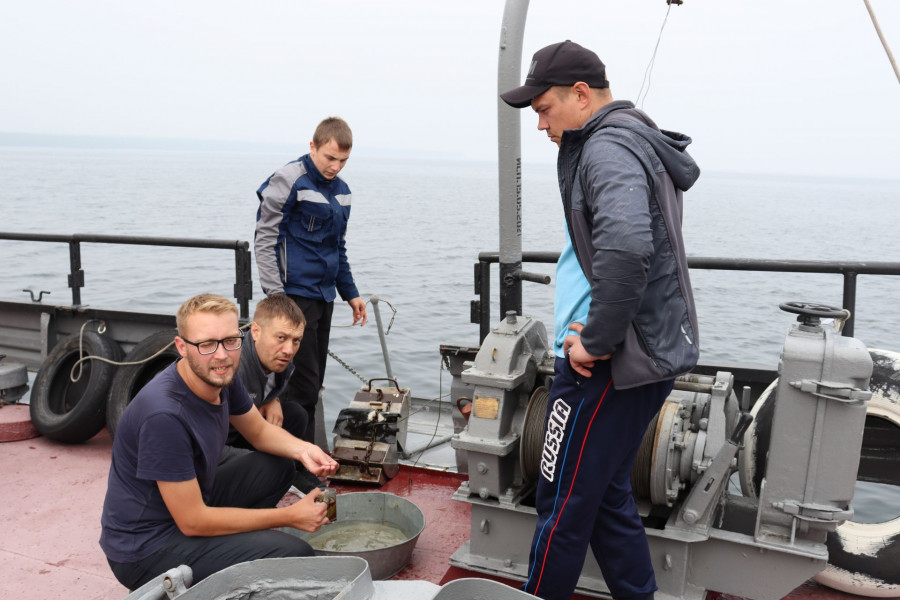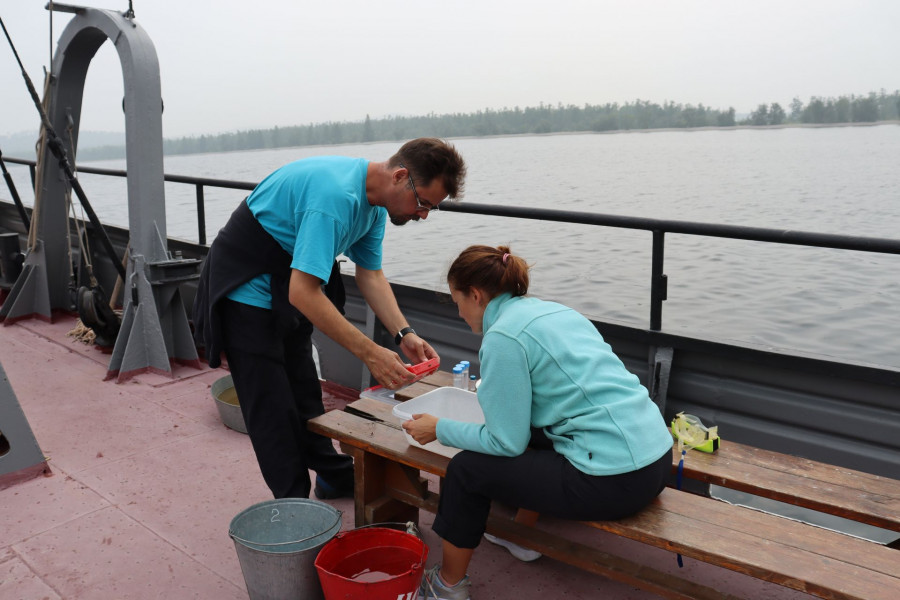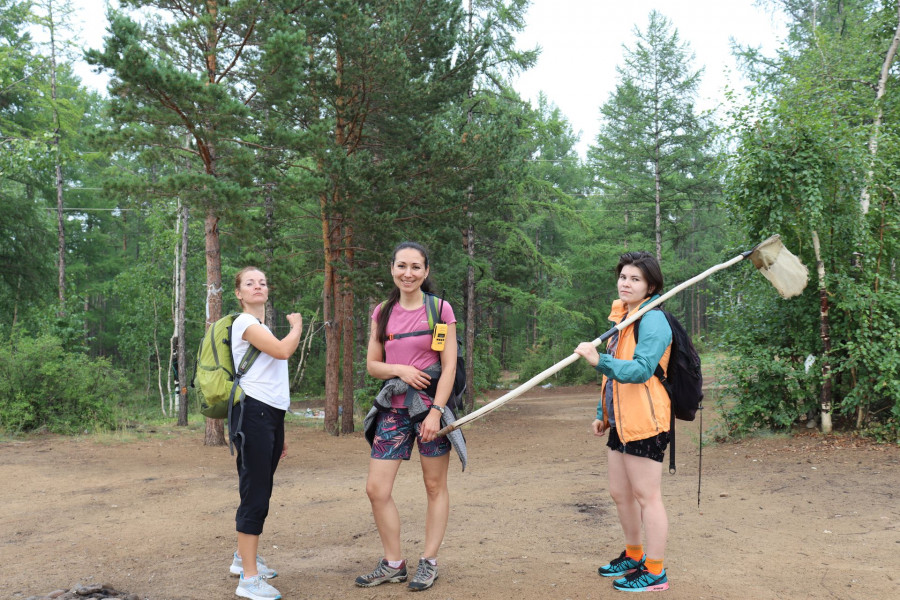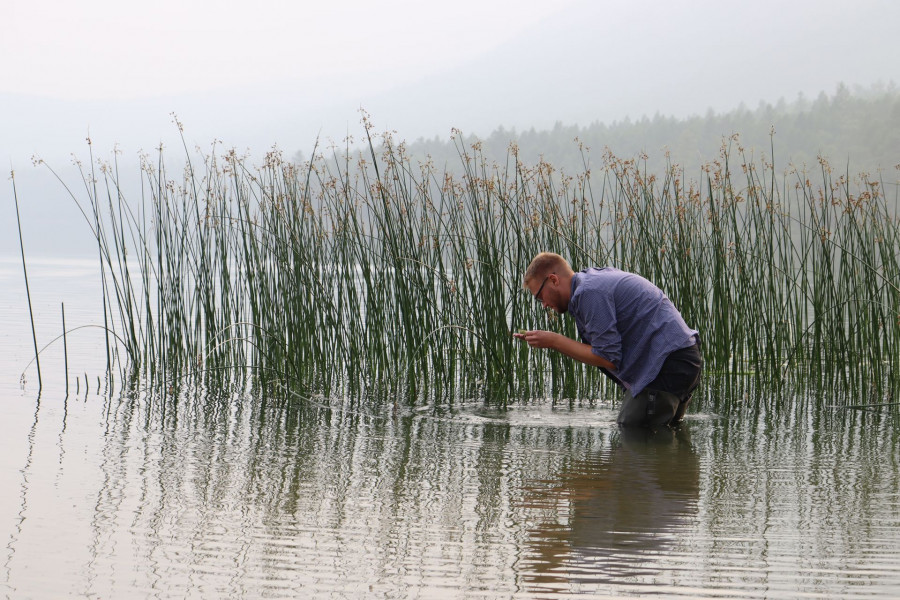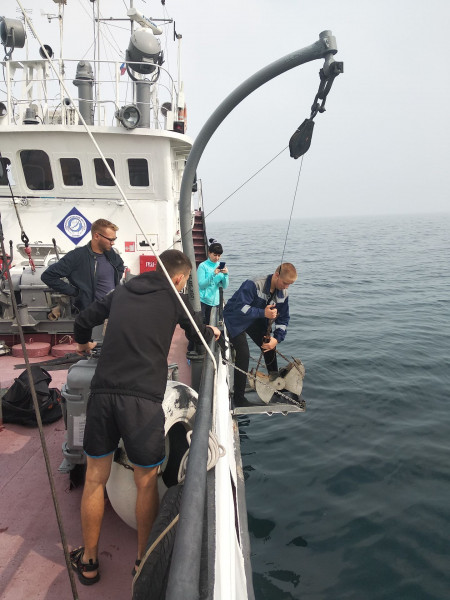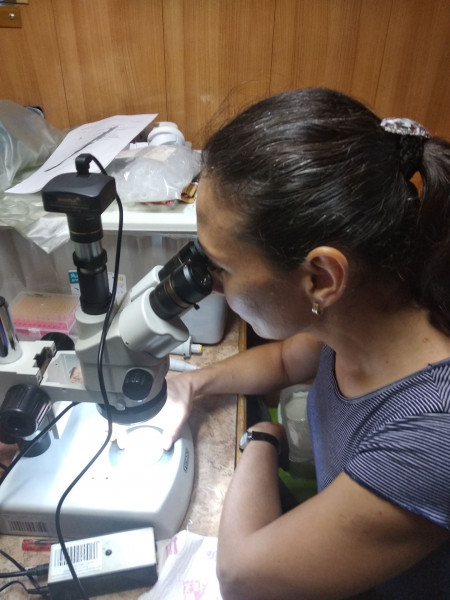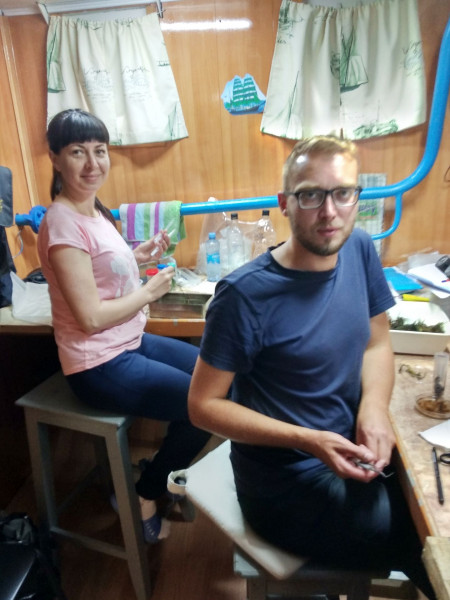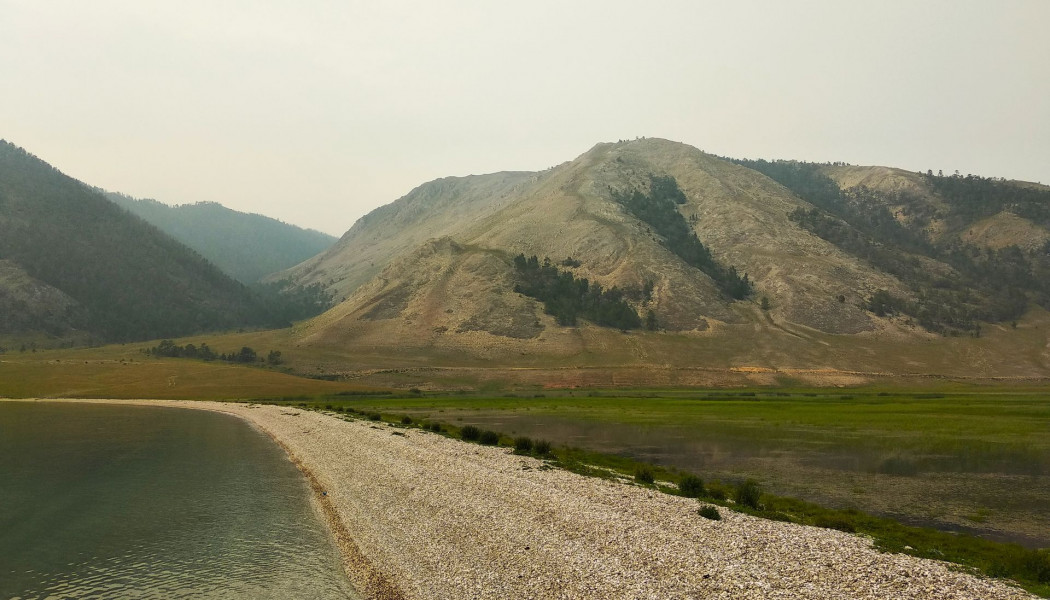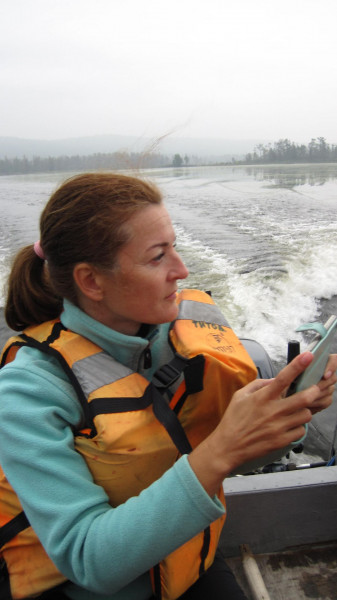Expedition on board the RV “Titov” from 3 to 13 August 2021
Expedition on board the RV “Titov” from 3 to 13 August 2021
The expedition was carried out on board the RV “Titov” from 3 to 13 August 2021 along the east and west coasts in the central and northern basins of Lake Baikal.
During the expedition, macrophytes were sampled from Lake Baikal, the water bodies in the lake’s coastal-sor zone and some large lakes (Slyudyanka lakes and Lake Frolikha). Special attention was paid to endemic members of the families Chaetophoraceae and Cladophoraceae, the Chara algae (family Characeae) poorly studied in Lake Baikal, the Zygnema algae of the genera Spirogyra, Mougeotia and Zygnema atypical of Lake Baikal, and yellow-green algae of the genus Vaucheria. Samples were taken within the depth range from 0 to 20 m from various substrates and in a free-floating state and fixed for subsequent morphological and molecular genetic study that is expected to be conducted using new markers. Additionally, a new herbarium of algae and aquatic vascular plants was collected.
Bryozoans collected in the water bodies of the coastal-sor zone of Lake Baikal were assigned to Plumatella repens P. emarginata, Cristatella mucedo (subclass Phylactolaemata) and Hislopia placoides (subclass Gymnolaemata) based on the structure of zooids and the appearance of the colonies. Sympatrically, up to three species of bryozoans were found in some lakes. The members of the genus Hydra were collected in all investigated lakes as well as in Frolika Lake and Slyudyanka lakes. Hydras of the species H. oligactis and H. circumcincta were the most common. Hydras of the species H. oxycnida previously collected in Posolsk Sor, Nizhneangarsk Sor and Lake Zama were collected in Lake Arangatuy. Bryozoans and hydras were fixed with ethyl alcohol and 2% Stab solution for subsequent morphological and molecular genetic analysis.
In the central and northern basins of Lake Baikal, soil samples were taken at depths from 300 to 500 m, and microbiological inoculation on the selective solid media was carried out for subsequent mycological analysis.




